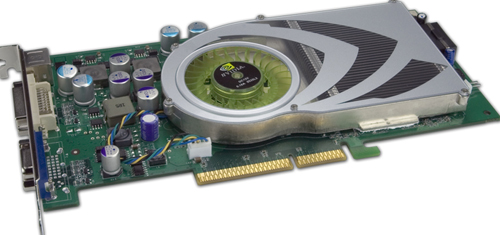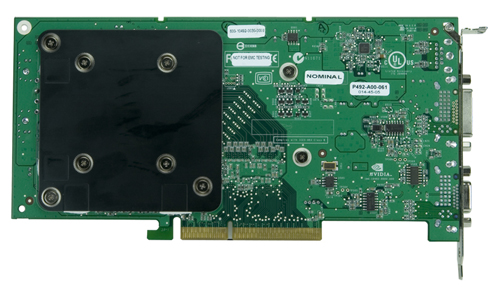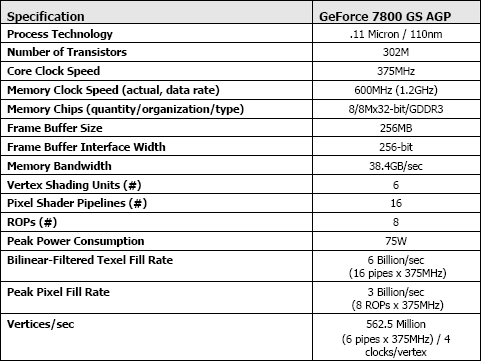The Card and The Test
As mentioned, we currently have both a 7800 GS from EVGA and the 7800 GS OC from BFG. Neither of these cards run at the default 375/1.2 clock speeds set forth by NVIDIA. For the purposes of these tests, we underclocked a card to the minimum speed that NVIDIA is endorsing. With the high clock speeds that we see from BFG and EVGA, we'd be willing to bet that even 7800 GS parts that don't come factory overclocked would have some head room. The EVGA card is clocked at core/mem clocks of 460/1.35, while the BFG part runs at 400/1.25. It is interesting to note that the BFG part makes a bigger deal out of being overclocked on the box than the EVGA card, but either way, the 7800 GS is no slouch.
Gigabyte K8U-939 ULi based motherboard
AMD Athlon 64 FX-57
2x 1GB OCZ PC4000 RAM @ 200MHz 2:3:3:8
160GB Seagate 7200.7 HD
OCZ 600W PowerStream PSU
For reference, we have included the 7800 GTX 512 and the X1900 XTX. This gives us a clear look at the highest end ATI and NVIDIA hardware available for both the AGP and PCIe platforms. The 7800 GT is also included in order to show us the performance of the next fastest NVIDIA part out there.
Here's a breakdown of the 7800 GS specifications as outlined by NVIDIA.
As mentioned, we currently have both a 7800 GS from EVGA and the 7800 GS OC from BFG. Neither of these cards run at the default 375/1.2 clock speeds set forth by NVIDIA. For the purposes of these tests, we underclocked a card to the minimum speed that NVIDIA is endorsing. With the high clock speeds that we see from BFG and EVGA, we'd be willing to bet that even 7800 GS parts that don't come factory overclocked would have some head room. The EVGA card is clocked at core/mem clocks of 460/1.35, while the BFG part runs at 400/1.25. It is interesting to note that the BFG part makes a bigger deal out of being overclocked on the box than the EVGA card, but either way, the 7800 GS is no slouch.


Gigabyte K8U-939 ULi based motherboard
AMD Athlon 64 FX-57
2x 1GB OCZ PC4000 RAM @ 200MHz 2:3:3:8
160GB Seagate 7200.7 HD
OCZ 600W PowerStream PSU
For reference, we have included the 7800 GTX 512 and the X1900 XTX. This gives us a clear look at the highest end ATI and NVIDIA hardware available for both the AGP and PCIe platforms. The 7800 GT is also included in order to show us the performance of the next fastest NVIDIA part out there.
Here's a breakdown of the 7800 GS specifications as outlined by NVIDIA.











93 Comments
View All Comments
Spoelie - Friday, February 3, 2006 - link
I think you missed the point of this article. It was not meant as a review of the particular brands, but of the card nvidia just released. Those are the reference clocks and that's what nvidia is putting out right now, it is the baseline you can expect all the 7800gs cards to do, not what some brands may do. That they just happened to use an evga card to show it doesn't really have anything to do with the matter.I'm pretty sure there will be a followup article discussing the differences between the brands and their clocks, with some lower end comparison cards everyone is craving for thrown in for good measure. I hope you can leave your pants on till then.
mindless1 - Friday, February 3, 2006 - link
If the context is seen as those cards, for that price, we can reasonably assume only someone ignorant of clock speeds would pay same price for a lower clocked stock card, else they'd planned to really o'c it themselves.So, we do care what some brands do because it's not that we're buying a "7800GS" if we do, rather we're buying a 7800GS for 7800GS performance levels which are not a conceptual thing but an actual product.
Who wears pants? ;)
phaxmohdem - Thursday, February 2, 2006 - link
No kidding, I was actually VERY upset and confused as to why you downclocked the retail parts, or at least didn't run tests both ways. VERY poor reviewing on this one IMO, not typical of Anands norm. IF I go out and purchase a eVGA 7800GS for my FX-51 AGP system, I"m sure as hell not going to underclock it the second I get it. I would most likely just leave it at stock and call it a day.PLZ for the love of God, show us the true out of the box performance numbers, and compare it to other cards like my AGP x800XL, or the 6800GT/Ultra AGP parts.
bldckstark - Thursday, February 2, 2006 - link
This is my idea of a hard launch --> A buyer has to be able to purchase the part on the day of the launch, or it is not hard. Not ALL buyers, but enough stock so that parts are available to purchase nationally for at least 24 hours. Nationally meaning the part would have to be at a national retail chain (Best Buy, CompUSA, Fry's, etc.) or online where a price search engine can find it.So my definition of hard launch is, parts nationally available for 24 hours, or it is soft.
What do the rest of you think? Fair or not?
dqniel - Thursday, February 2, 2006 - link
Very fair.dqniel - Thursday, February 2, 2006 - link
Very disappointing. This card at stock is $300 yet has worse performance than the x850xt in most cases which is about $210 now...Perhaps I need to see some results with this thing overclocked and the pipes unlocked (if they truely can be)
kmmatney - Thursday, February 2, 2006 - link
The AGP version of the X850xt is way higher than $210, more like around $400. IMO, its pointless to get it. You can just get a new mobo for the price difference, especially if you already have a good processor.When I went to PCIE, I bought a new mobo, Sempron 2800+, and X800GTO2, all for ~$350 $350. Then then sold my old setup for $150, so my net cost was $200, and I have a much faster cpu as well as a faster video card. Way better than paying $300 or so dollars just for a new video card.
OvErHeAtInG - Thursday, February 2, 2006 - link
Well to be more accurate, the X850 XT AGP can be had for <250. Heck I bought an X800 XT PE last summer for $249 shipped, and some people are now getting the 850's for less than that. You don't see these deals widely advertised, as it would compete with the 800GTO's.Now to be fair, dgniel compared street prices of the X850 to MSRP of the 7800GS which is apples-to-oranges. But I don't think too many people pay $400 for X850 XT's anymore, seeing as a 7800GT will match its performance for 100 less and better feature set.
Avalon - Thursday, February 2, 2006 - link
So how many pixel pipelines does the card have, 16? Let's see some benches of it overclocked.rcxplane - Thursday, February 2, 2006 - link
Check out this reviewhttp://www.ngohq.com/home.php?page=articles&go...">http://www.ngohq.com/home.php?page=articles&go...
If the numbers are correct it shows an overclocked 7800GS with stock cooler getting a higher score than the 7800GT.
I have read in several places that people have been able to unlock the unused pipelines and shaders using RivaTuner.
If all this is true then Its a must buy for all of us still using AGP
I agree with all above. I would also like to see the card compared to the AGP 6800GT and Ultra with OC scores.